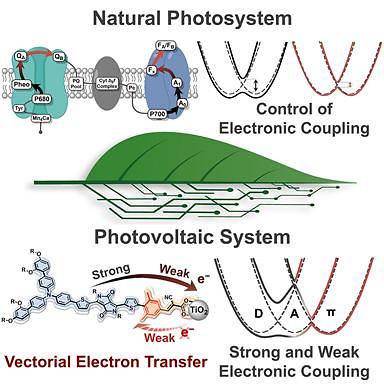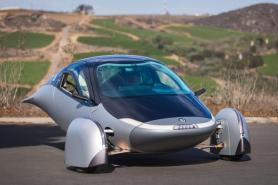
[Courtesy of UNIST]
SEOUL -- By inducing an ideal electron flow process called vectorial transfer, South Korean researchers were able to develop a solar cell manufacturing technique that can produce cells with up to 60 percent more electron transfer efficiency than conventional cells. The new technique allows photovoltaic cells to control electron flow in one desired direction to reduce the loss of electrons during power generation.
Conventional photosensitizers used in photovoltaic cells have strong electronic coupling characteristics which lose a lot of electrons when transferred between molecules because of the rapid recombination of electrons and electron holes. Electron holes are positions that lack an electron in an atom or atomic lattice. Natural photosystems, such as those used by plants for photosynthesis, utilize vectorial transfer to control the direction of electron flow and prevent the recombination of electrons and holes. Plants show about 100 percent efficiency in the transfer of electrons.
The Ulsan National Institute of Science and Technology (UNIST) said in a statement that a joint team involving researchers from UNIST and Japan's Shinshu University developed a technique to create more efficient solar cells using a specially designed dye that has both strong and weak electronic coupling characteristics to minimize the electron recombination phenomenon.
Solar cells using the dye showed a maximum photovoltaic efficiency of 10.8 percent, which is about 60 percent more efficient than conventional cells. The rate of recombination was about 12.5 percent compared to ordinary photovoltaic cells. "The molecular design strategy developed in this study can be applied not only to solar cells but also to various fields such as artificial photosynthesis and photocatalysts," UNIST researcher Kwon Tae-hyuk was quoted as saying.
Copyright ⓒ Aju Press All rights reserved.



![[K-Tech] Hanwha Q Cells joins US petition to curb solar panel imports from Chinese-controlled firms](https://image.ajunews.com/content/image/2025/07/18/20250718110410353245_278_163.png)
